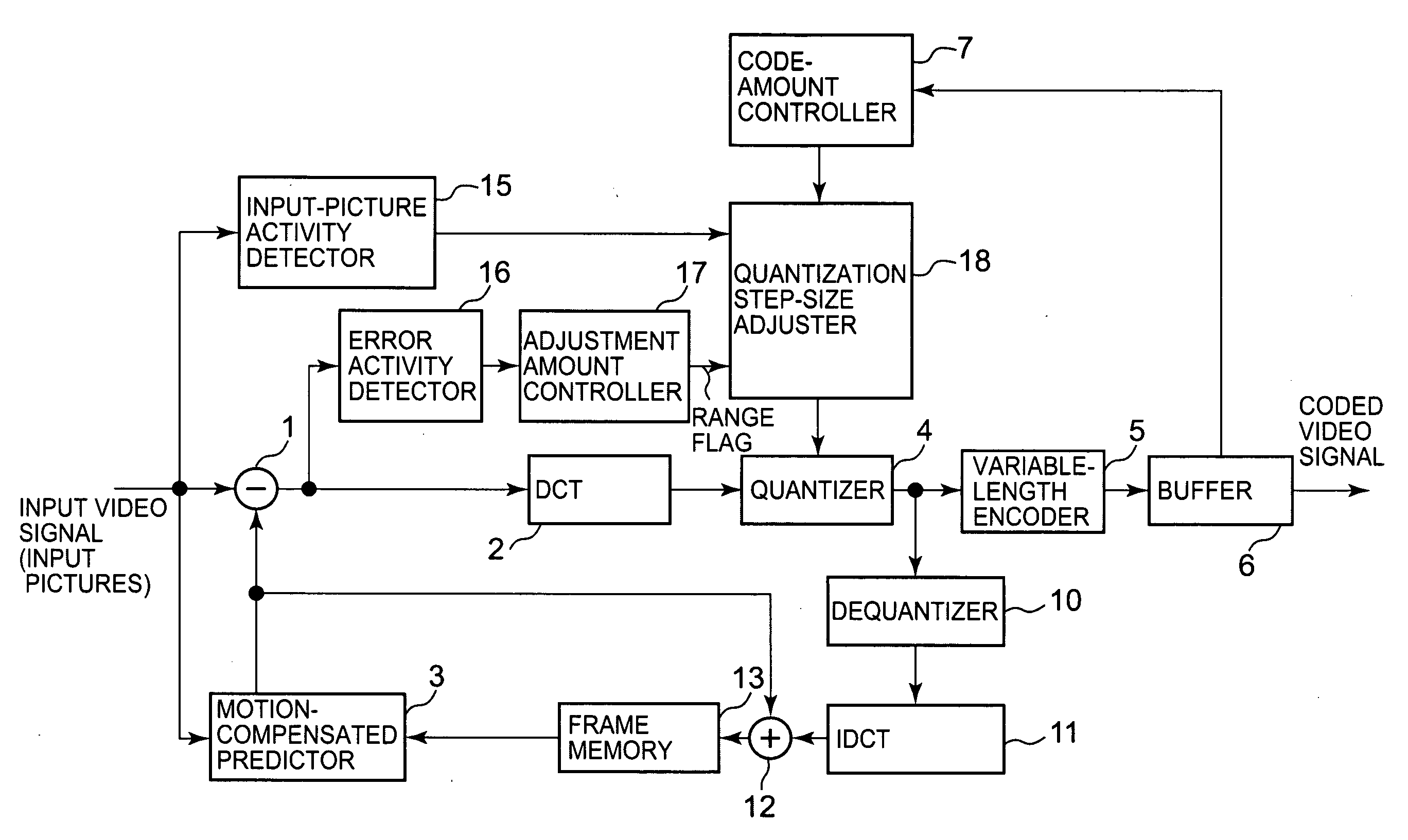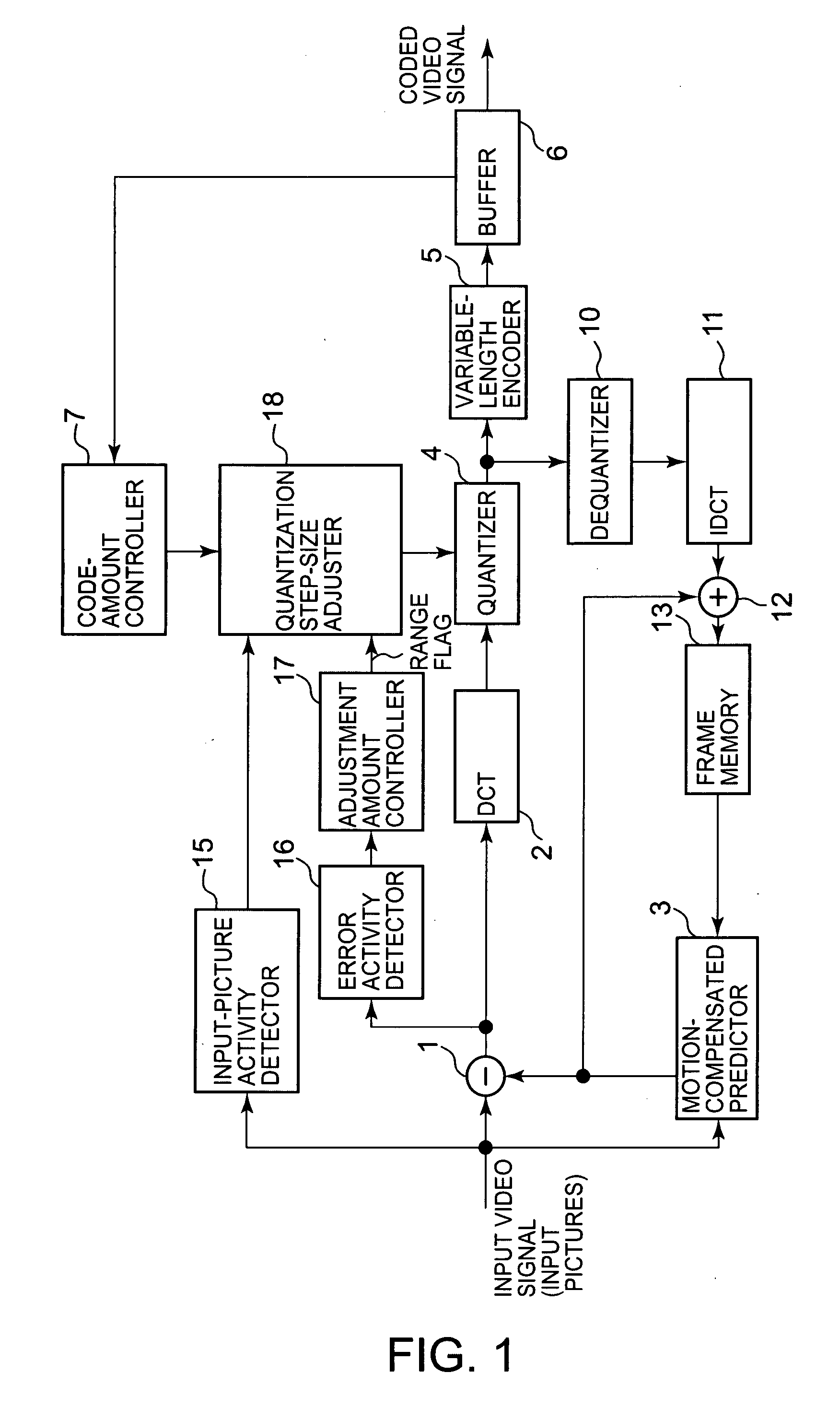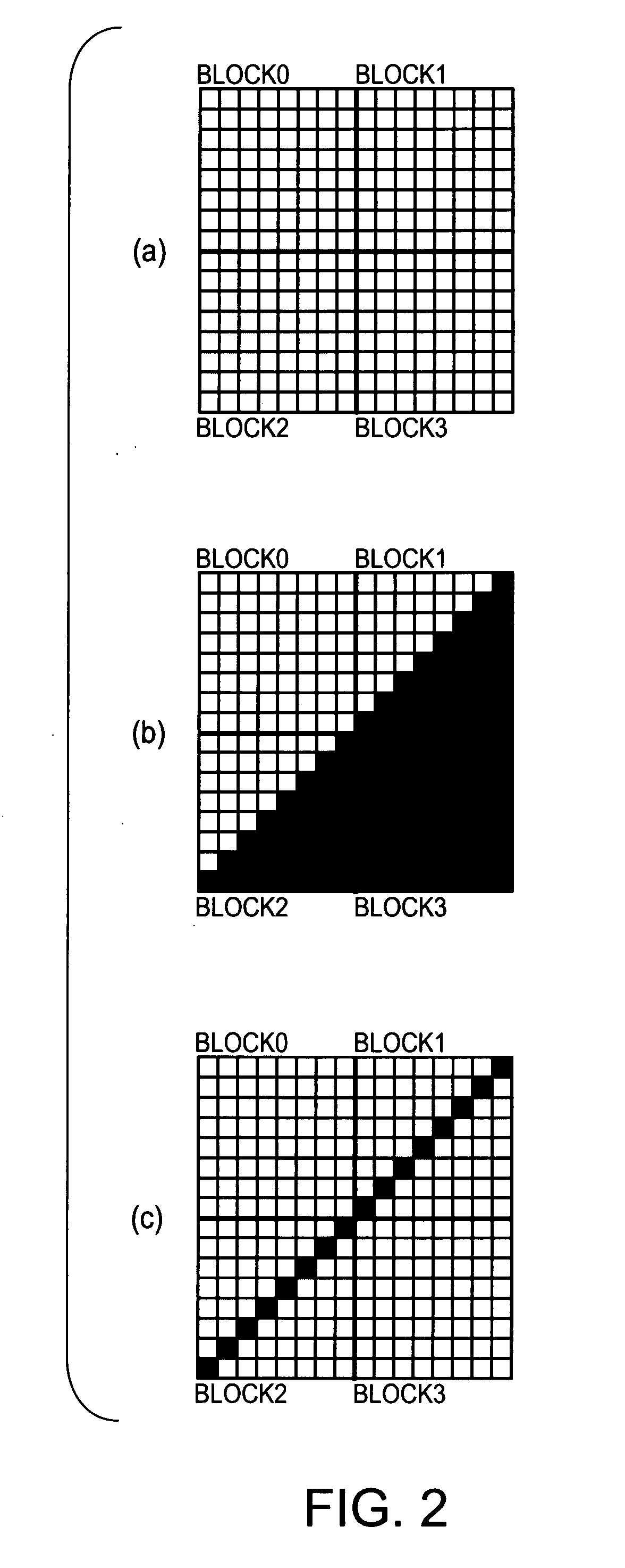Adaptive quantizer, adaptive quantization method and adaptive quantization program
a quantizer and quantization method technology, applied in the field of adaptive quantizers, adaptive quantization methods and adaptive quantization programs, can solve the problems of insufficient suppression of mosquito noise and inability to achieve the suppression of mosquito noise in the edge portion
- Summary
- Abstract
- Description
- Claims
- Application Information
AI Technical Summary
Benefits of technology
Problems solved by technology
Method used
Image
Examples
Embodiment Construction
[0020]FIG. 1 shows a block diagram of an embodiment of an adaptive quantizer installed in a moving-picture encoding apparatus according to the present invention.
[0021]An input video signal carrying moving pictures is supplied to a subtractor 1, a motion-compensated predictor 3 and an input-picture activity detector 15.
[0022]Each moving picture carried by the input video signal and input to the moving-picture encoding apparatus is referred to as an input picture or frame in the following disclosure.
[0023]The input video signal is supplied to a DCT unit 2 through the subtractor 1 and undergoes DCT. When an input frame carried by the input video signal is an I-picture, it passes the subtractor 1 and undergoes DCT. In contrast, when an input frame carried by the input video signal is a P- or B-picture, subjected to DCT is a predictive error signal produced at the subtractor 1.
[0024]The predictive error signal is produced at the subtractor 1 by subtracting a motion-compensated predictive...
PUM
 Login to View More
Login to View More Abstract
Description
Claims
Application Information
 Login to View More
Login to View More - R&D
- Intellectual Property
- Life Sciences
- Materials
- Tech Scout
- Unparalleled Data Quality
- Higher Quality Content
- 60% Fewer Hallucinations
Browse by: Latest US Patents, China's latest patents, Technical Efficacy Thesaurus, Application Domain, Technology Topic, Popular Technical Reports.
© 2025 PatSnap. All rights reserved.Legal|Privacy policy|Modern Slavery Act Transparency Statement|Sitemap|About US| Contact US: help@patsnap.com



